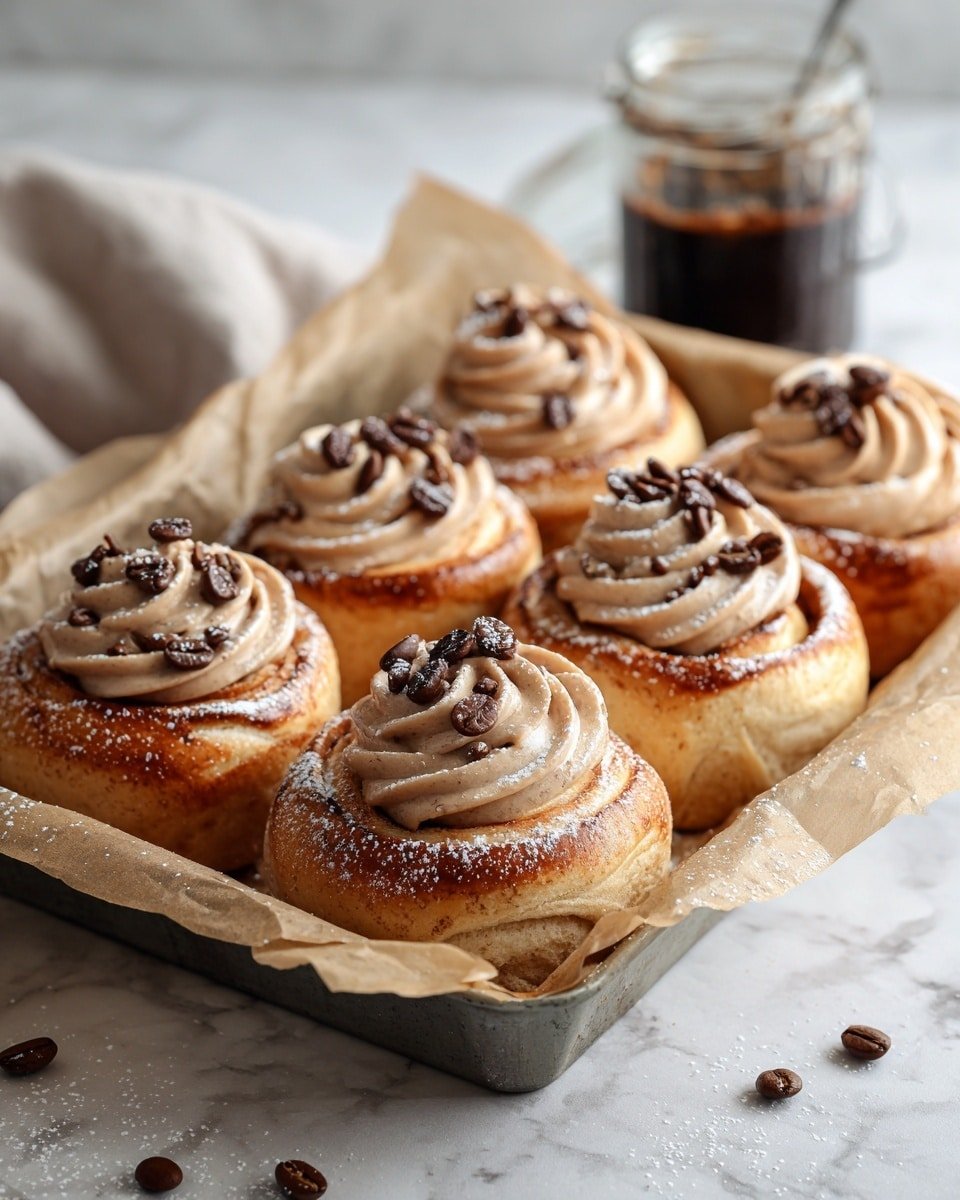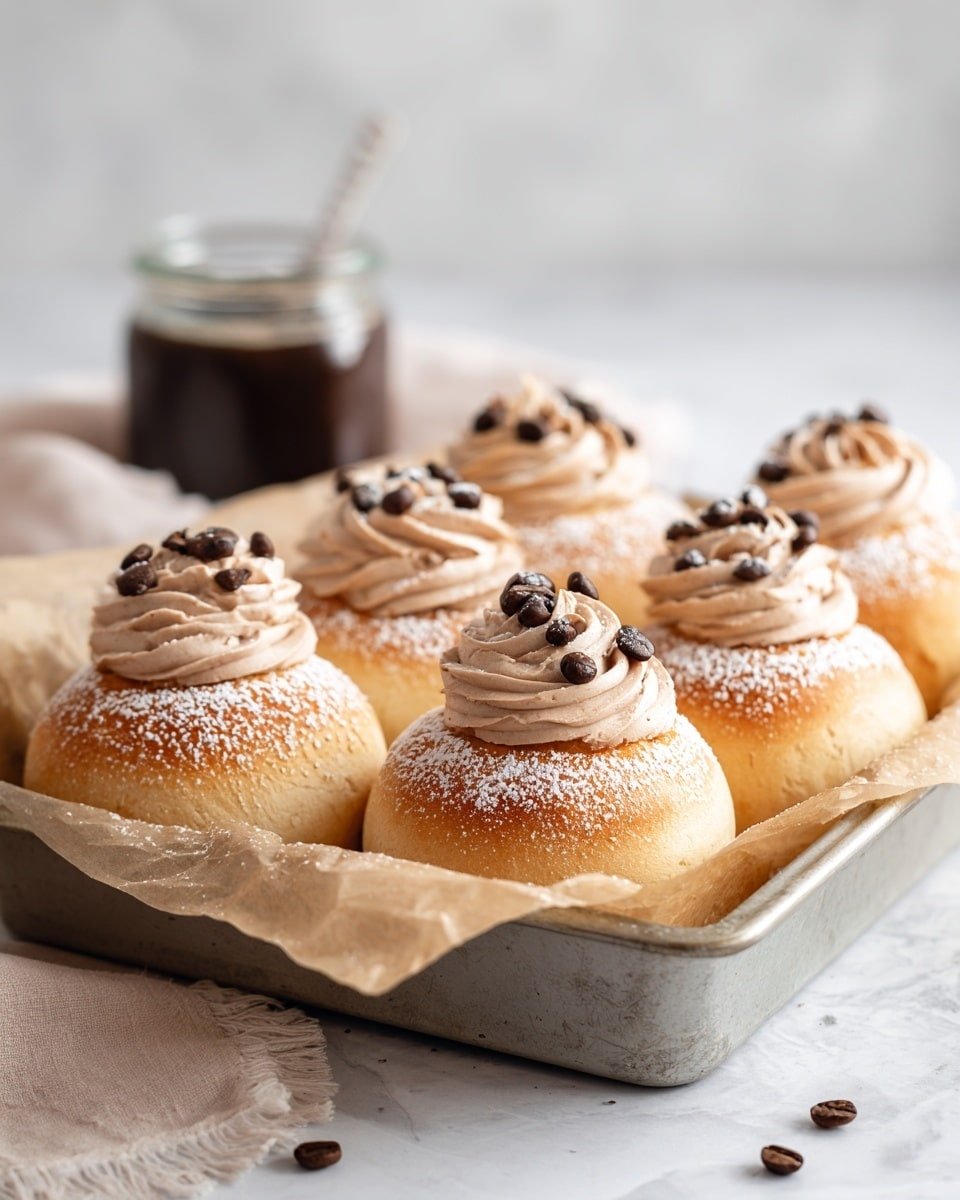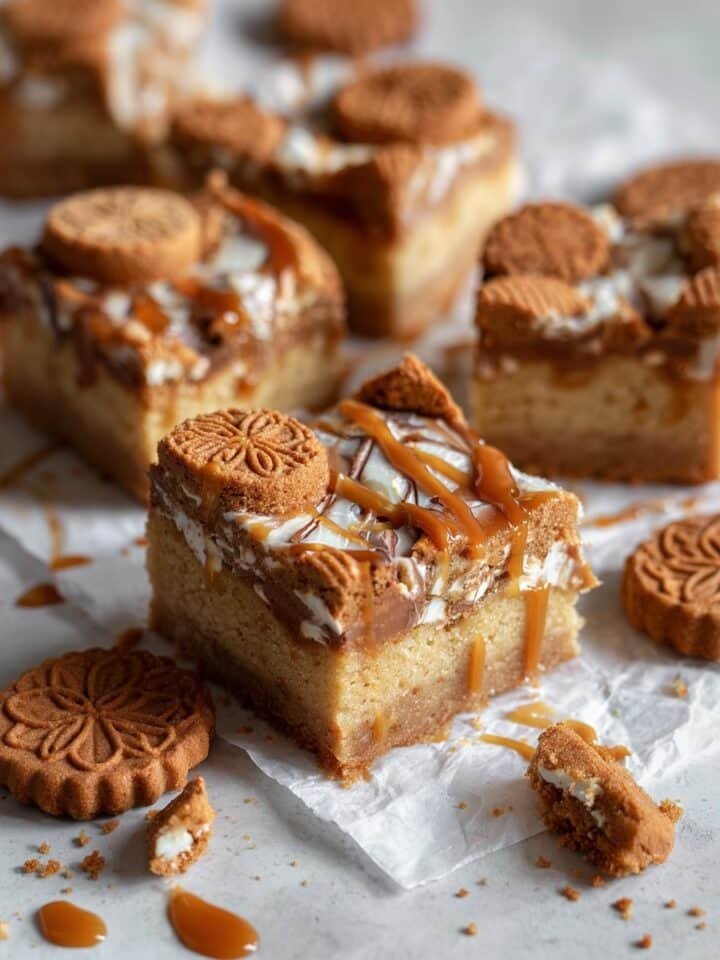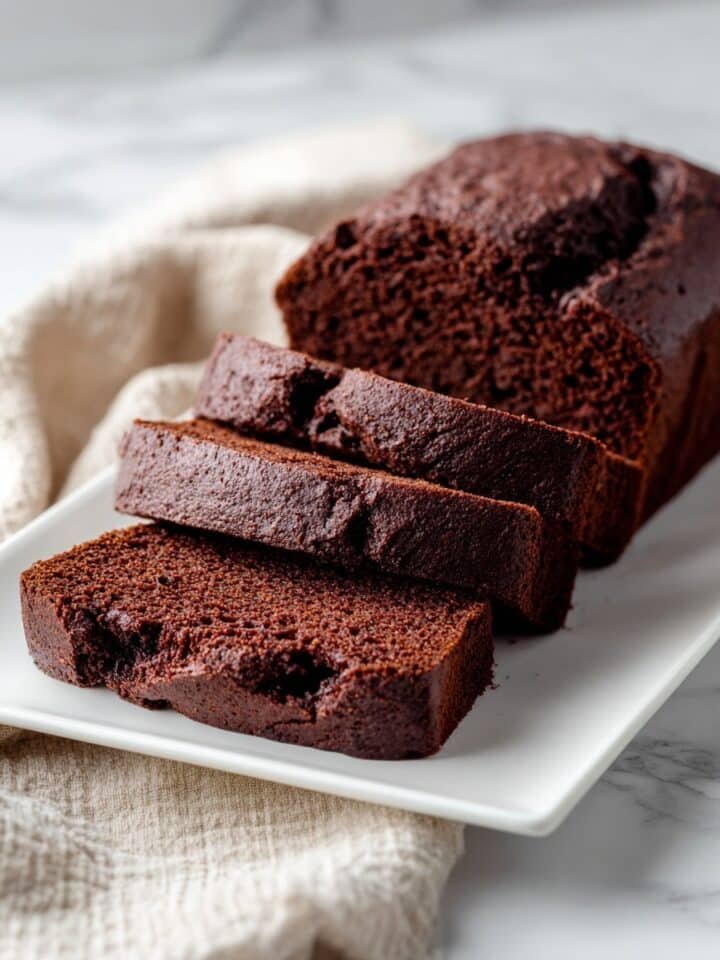When you're craving something soft, rich, and just a little bit indulgent, these Brioche Doughnuts with Espresso Frosting Recipe answer the call perfectly. Made from buttery, tender brioche dough, these doughnuts are fried to a golden crisp and finished with a luscious espresso frosting that adds a deep, coffee-kissed sweetness. Whether you're making them for a weekend treat or to impress friends at brunch, you'll love how effortless and satisfying they turn out.

Jump to:
What Sets This Apart
This Brioche Doughnuts with Espresso Frosting Recipe stands out because it combines the buttery decadence of brioche bread with the satisfying crunch of fried doughnuts and a bold, silky espresso frosting that elevates every bite.
- Consistent Results: The recipe includes proven kneading and proofing times so your doughnuts rise perfectly each time.
- Rich, Balanced Flavor: Buttery brioche with just the right espresso frosting sweetness-never overpowering or flat.
- Pantry-First Ingredients: Most are staples you likely have on hand, except maybe a pinch of espresso powder to boost flavor.
- Weeknight Friendly: Though it requires some rising time, you can prep the dough ahead and fry fresh whenever you like.
Ingredient Snapshot

Choosing quality ingredients here really pays off. For the brioche dough, fresh eggs and real butter make the texture luxuriously soft, while the espresso powder in the frosting adds a bold kick with no bitterness-just pure flavor.
- All-purpose flour: Use fresh, unbleached flour for the best structure and flavor.
- Instant yeast: Keeps fermentation simple and consistent-no proofing needed.
- Butter (unsalted): Room temperature for easy mixing and smooth dough texture.
- Espresso powder: Instant variety works great to infuse frosting with a rich coffee note.
Quick Note: Exact measurements are in the printable recipe card at the bottom.
How to Make Brioche Doughnuts with Espresso Frosting Recipe
Step 1 - Prep & Season
Start by mixing your dry ingredients-flour, instant yeast, sugar, and salt-in the bowl of a stand mixer fitted with the dough hook. Gently add the eggs and warm milk (about 110°F) and mix on low until just combined, around two minutes. This warm milk jump-starts yeast activity, but keep it below 115°F to avoid killing the yeast. Once past this step, increase to medium speed and knead for about 5 to 6 minutes until the dough starts to come together.
Step 2 - Build Flavor
This is where the magic happens-adding the butter slowly. Add your room-temperature butter one cube at a time, letting each piece get fully incorporated before adding the next. Keep kneading for 8 to 10 minutes more until the dough is smooth, elastic, and slightly sticky but not wet. I've found that rushing this step can leave your dough greasy or dense, so patience really pays off. Let the dough rise in a lightly greased bowl, covered tightly, for 1 to 1½ hours until doubled.
Step 3 - Finish for Best Texture
After punching down your dough, refrigerate it covered for at least an hour or up to overnight. This makes it easier to roll and shapes your doughnuts with a tender crumb. Roll the dough on a floured surface to about ¾-inch thickness and cut into 3-inch rounds. Let them rest covered on parchment until puffy-about 45 minutes. Heat oil to a steady 350°F and fry two to three doughnuts at a time for 1 to 2 minutes per side, watching for a deep golden color. Drain on a wire rack, then immediately coat each doughnut in granulated sugar while warm for that irresistible glossy finish.
Cook's Notes & Tricks
I always pay close attention to the dough texture when kneading brioche doughnuts-it should feel elastic and softly sticky but not too wet. Also, the espresso frosting is best when frosting is fluffy but smooth, so beat the butter well before adding sugar gradually. These little details elevate the entire experience.
- Doneness Cue: Doughnuts should be golden on both sides and puffed, not greasy.
- Temperature Trick: Keep oil temperature steady around 350°F; too hot and outside burns before inside cooks.
- Make-Ahead Move: Refrigerate dough overnight to enhance flavor and make shaping easier.
- Avoid This Pitfall: Don't skip gradual butter incorporation-it's key to light, tender dough.
Serve & Enjoy

Finishing Touches
Once your doughnuts have cooled enough to handle, pipe a swirl of the espresso frosting on top using a star tip-you'll see how the glossy, dark frosting contrasts beautifully with the golden doughnut. I like to scatter mini chocolate chips on top for a little crunch and additional sweetness that pairs perfectly with the espresso.
Pairs Beautifully With
These brioche doughnuts with espresso frosting shine alongside a creamy latte or even a chilled milkshake. If you're serving brunch, add fresh berries or salted nuts for contrast. The espresso flavor cuts through sweet sides nicely, balancing the overall plate.
Simple Plating Wins
Keep it casual by placing doughnuts in a rustic basket lined with parchment, or dress them up on a cake stand sprinkled with a dusting of cocoa powder. Swirling the frosting with a piping bag makes them feel special without extra fuss-perfect whether it's a quiet morning or entertaining guests.
Make-Ahead, Storage & Reheat
Storing Leftovers
Keep your leftover doughnuts in an airtight container at room temperature for up to 2 days. Refrigeration tends to dry out the brioche dough, so it's best to avoid chilling unless your kitchen is too warm. You'll notice they soften slightly after a day but remain deliciously flavorful.
Freezing Tips
These doughnuts freeze surprisingly well. Let them cool completely, wrap individually in plastic wrap, then store in a freezer-safe bag. Thaw overnight at room temperature and refresh by warming briefly before frosting. The texture and flavor hold up nicely, making it easy to prep in advance.
Reheating Brioche Doughnuts with Espresso Frosting Recipe Without Drying Out
To reheat, lightly warm in the microwave for 10-15 seconds wrapped in a damp paper towel-this traps moisture and keeps the doughnut tender. You can also refresh in a 300°F oven for 5-7 minutes on a wire rack to keep them from getting soggy. Avoid overheating, which dries them out quickly. Frost after warming for best results.
Frequently Asked Questions
You can, but you'll need to proof active dry yeast in warm water first, then adjust liquid levels accordingly. Instant yeast is more convenient and gives consistent rises without proofing.
Yes, chilling the dough firms up the butter and makes it easier to roll and cut doughnuts without sticking or tearing, resulting in a better texture.
Espresso frosting uses concentrated instant espresso powder or strong brewed espresso, giving a more intense coffee flavor with less bitterness than standard coffee frostings.
Use a candy or deep-fry thermometer to maintain 350°F. If you don't have one, drop a small piece of dough in the oil-if it sizzles immediately and rises steadily, the temperature's about right.
Final Thoughts
PrintFull Recipe
Brioche Doughnuts with Espresso Frosting Recipe
Deliciously soft and rich brioche doughnuts topped with a smooth espresso frosting and garnished with mini chocolate chips. Perfect for a special breakfast or indulgent treat.
- Prep Time: 30 minutes
- Cook Time: 30 minutes
- Total Time: 4 hours
- Yield: 12 servings
- Category: Dessert
- Method: Frying
- Cuisine: French
- Diet: Vegetarian
Ingredients
For the Brioche Doughnuts
- 3 cups all-purpose flour
- 2 ¼ teaspoons instant yeast (1 packet)
- ¼ cup granulated sugar
- ¾ teaspoon salt
- 3 large eggs, room temperature
- ½ cup whole milk, warm (110°F)
- ½ cup unsalted butter, room temperature, cut into cubes
- Oil, for frying
- Extra granulated sugar, for coating
For the Espresso Frosting
- ½ cup unsalted butter, room temperature
- 1 ½ cups powdered sugar, sifted
- 1 ½ teaspoons instant espresso powder (or strong brewed espresso)
- 1 tablespoon heavy cream or milk
- ½ teaspoon vanilla extract
- Pinch of salt
For the Garnish
- Mini chocolate chips
Instructions
- Mix Dry Ingredients: In the bowl of a stand mixer fitted with a dough hook, combine flour, yeast, sugar, and salt.
- Add Wet Ingredients: Add eggs and warm milk. Mix on low speed until combined, about 2 minutes.
- Knead Dough: Increase to medium speed and knead for 5 to 6 minutes.
- Incorporate Butter: Add butter a few cubes at a time, allowing each addition to fully incorporate. Knead for another 8 to 10 minutes until the dough is smooth, elastic, and slightly sticky.
- First Rise: Transfer dough to a greased bowl, cover, and let rise at room temperature for 1 to 1½ hours until doubled in size.
- Refrigerate Dough: Punch down dough and refrigerate covered for 1 hour or up to overnight.
- Shape Doughnuts: Roll dough out on a floured surface to ¾-inch thickness. Cut into 3-inch rounds using a cutter.
- Second Rise: Place doughnuts on parchment-lined trays, cover lightly, and let rise until puffy, about 45 minutes.
- Heat Oil: Heat oil in a deep pot to 350°F (175°C).
- Fry Doughnuts: Fry 2 to 3 doughnuts at a time for 1 to 2 minutes per side until golden brown.
- Drain and Coat: Drain doughnuts on a wire rack, then roll in granulated sugar while still warm.
- Prepare Frosting: In a bowl, beat butter until light and fluffy. Gradually add powdered sugar. Dissolve espresso powder in cream or add brewed espresso, then mix into the frosting along with vanilla extract and salt. Beat until smooth and creamy.
- Decorate Doughnuts: Transfer frosting to a piping bag fitted with a star tip. Pipe a swirl of espresso frosting on top of each cooled doughnut.
- Garnish and Serve: Garnish with mini chocolate chips and serve fresh.
Notes
- Make sure the milk is warm but not hot to properly activate the yeast.
- Butter should be at room temperature so it incorporates smoothly into the dough.
- Allowing the doughnuts to rise twice ensures a light and fluffy texture.
- Use a deep pot for frying to maintain consistent oil temperature.
- For stronger espresso flavor, use brewed espresso instead of instant powder.
- Frost doughnuts only when fully cooled to prevent melting the frosting.
- The dough can be refrigerated overnight for convenience and enhanced flavor.







Leave a Reply